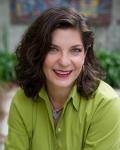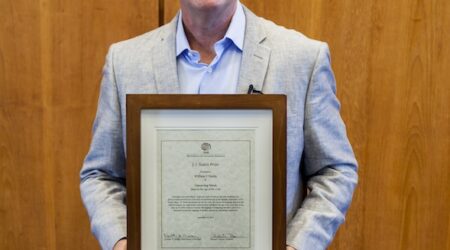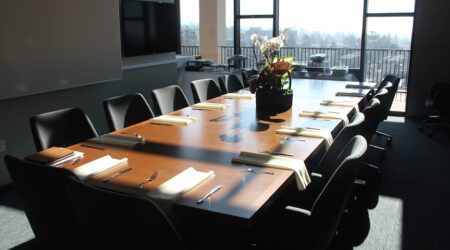Qualitative social scientists and humanists have long had an ambivalent relationship to the use and deployment of statistics. This is in part because of influential work by theorists like Michel Foucault, Edward Said, and Bernard Cohn on what is known, in academic parlance, as the “power-knowledge nexus.”
In Discipline and Punish: The Birth of the Prison (1975), Foucault famously argues that power is in fact productive, not repressive: “[I]t produces reality; it produces domains of objects and rituals of truth.” We might add to the mix Said’s equally well-known argument in Orientalism (1978) that the production of knowledge about a place or people—through, for example, the collection and production of statistics—is also always an assertion of power and control. In Colonialism and its Forms of Knowledge (1996), Cohn, an anthropologist of South Asia, reminds us that the original meaning of statistics is “the collection of information thought necessary and useful to the state.” In the South Asian context, British colonialists employed quantitative technologies such as the census to produce social categories for statist administration. Put simply, people were counted so that they might also be regulated.
Professor Juana María Rodríguez, from UC Berkeley’s Department of Gender and Women’s Studies, was well aware of this fraught history when, at the Annual Meeting of the American Studies Association in Toronto earlier this year, she provocatively suggested that the literary and cultural study of lesbian, gay, bisexual, and transgender (LGBT) communities might benefit from a critical revaluation of statistics and statistical methodologies. In her remarks for a roundtable on “The Miseries of Marriage: What Do Queers Lose When We ‘Win’?”, Rodríguez offered one example of “what data makes visible . . . that discourse analysis alone has trouble seeing”: the statistical majority of bisexual subjects among those classed as LGB(T).

Reading the UCLA Williams Institute’s population-based research on LGBT populations in the United States, Rodríguez, author of Queer Latinidad: Identity Practices, Discursive Space (2003) and Sexual Futures, Queer Gestures, and Other Latina Longings (2014) — and a scholar who has always been attuned to sex as a regulatory, discursive force — realized the statistical significance of bisexuality. Drawing on nine separate surveys conducted in the United States, Europe and Canada, the Williams Institute researchers determined that among adults who identify as LGB, bisexuals comprised a slight majority, and bisexual women outnumbered lesbian in eight of the nine surveys considered. The statistical evidence inspired Rodríguez to learn more about the challenges faced by bisexual populations (for one, they have higher rates of poverty and suicide). It also made clear the extent to which, in her words, “bisexuality unsettles attempts to make queerness respectable within the binary logics of hetero- or homo-normativity.” Bisexuals are often made invisible within both gay and straight social circles, as their pan-sexualism is often seen as a threat to accepted norms around monogamy. Quoting legal scholar Kenji Yoshino, Rodríguez noted that this “epistemic contract of bisexual erasure” is especially pronounced in the context of the growing social consensus around the desirability and political efficacy of gay marriage.
What happens, she asked, if we rethink queer through a re-centering of bisexuality, or a “decentering” of gay and lesbian? The statistical data on the bisexual population in LGBT communities enabled Rodríguez to see the extent to which bisexuality is an under-theorized, even marginalized subject in Queer Theory. In her talk, she speculated that greater attentiveness to statistical data—while it may not “really illuminate what sexuality is, how subjects experience their sexuality, or how, when, and why they deploy particular identifying labels to define themselves”—might enable Queer Theorists and scholars of LGBT communities, cultures, and literatures to better articulate the policy implications of their research, identify at-risk populations, and locate other marginalized or invisible subjects in dominant accounts of LGBT lives.
By that same token, she explained in an e-mail interview, “co-relation does not imply causality.” For example, when considering the statistics regarding the higher rate of suicide among bisexuals, “we have no idea the extent to which bisexuality has anything to do with an individual’s choice to end their life. There is also the additional risk that one vector of analysis—bisexuality—will become separated from all of the other potential contributing factor, including poverty, access to health care or mental health, religion, age, geographic location, race, etc.”
We are in a moment when we are increasingly turning to the state in an effort to manage the risks associated with sexuality…. But expecting the state to protect us from injury also involves giving the state even greater power to determine the very nature of harm, and to police and punish imagined forms of violations.
Professor Rodríguez noted that she and other humanists are not typically trained to analyze statistics, and yet, despite this lack of formal training, her involvement in political movements has made her appreciative of “how the use of statistics has moved the dial on a range of issues—discussions of police violence for example, or statistics on the status of under-represented faculty.” She then offered another example how statistics can influence dialogue: The 2013 Berkeley Climate Survey found that 398 students on the Berkeley campus (3.1%) identify as asexual, while, by way of comparison, 3.6% identify as bisexual, 3.5% as gay, 1.6% as lesbian, and 2.1% as queer. “Even relative to other non-heterosexual identities,” she said, “that number [of asexual-identified students] seems like something that sexuality scholars (and perhaps student service groups) need to be paying closer attention to in our work.”
Rodríguez’s remarks at the Annual Meeting of the American Studies Association drove at the heart of questions about social-scientific methodologies and the nature of data-driven argumentation. Social science research is, in theory, distinguishable from humanistic studies of the same topics by its scientism, but just what that scientism entails depends on the reigning consensus in the field in question. The science in social science is not, for example, reducible to the question of quantitative versus qualitative methods, since both fall under the purview of social-scientific knowledge production. The question, then, is one of methodologies: in simplest terms, the utilization of something like a scientific method of inquiry that ultimately produces reproducible results. This reproducibility is what is arguably absent from most humanistic research, which involves the creation of intricate, evidence-based arguments that are, nevertheless, constitutively open to debate.
Is attentiveness to statistics a form of information gathering like close reading and participant observation? Or is there something more specific—more scientific—about the disposition required of a researcher involved in the collection and analysis of statistical data? Rodríguez did not go so far as to suggest that statistics-inspired questions would bolster the scientism of the burgeoning fields of LGBT and Queer Studies. If anything, her interest in statistics has given her greater purchase on the value of mixed humanistic and social-scientific methodologies.
“[I]deas about risk in relationship to sexuality have changed,” she said. “I think we are in a moment when we are increasingly turning to the state in an effort to manage the risks associated with sexuality. So gay marriage is imagined as protection against dying alone . . . or hate-crime legislation is imagined as protection from being bullied, harassed, or murdered, or campus policies about sexual violence are imagined as protecting students from sexual harm. But expecting the state to protect us from injury also involves giving the state even greater power to determine the very nature of harm, and to police and punish imagined forms of violations.”
“In a post-AIDS moment, the language of risk—including the type of risk that statistics are invested in tracking—is being used in relation to sexuality in ways that demand greater scrutiny and investigation. So, in relation to really grappling with the full complexity of how ideas like sexuality, risk, harm are understood, deployed, or disseminated, statistics offers very little in terms of illuminating these as epistemological categories. That is why and when I turn back to humanistic methods.”
Irrespective of disciplinary orientation, Rodríguez’s remarks should inspire all researchers working on identities to, in her words, “think more seriously about how statistics are compiled, how questions are framed, and how data gets deployed,” while also thinking creatively about how the judicious use of statistical data may result in the production of better policy, better science, and perhaps even better research on a range of social and cultural forms.
Recommended Reading (adapted from the bibliography to Professor Rodríguez’s talk for the American Studies Association)
- Berlant, Lauren. Cruel Optimism. Durham: Duke University Press, 2011.
- Brown, Wendy. States of Injury: Power and Freedom in Late Modernity. Princeton: Princeton University Press, 1995.
- Gates, Gary J. “LGBT Identity: A Demographer’s Perspective.” Loyola of Los Angeles Law Review 45, no. 3 (2012).
- Hemmings, Clare. “What’s in a Name? Bisexuality, Transnational Sexuality Studies and Western Colonial Legacies.” The International Journal of Human Rights 11, no. 1–2 (March 1, 2007): 13–32.
- “How Many People Are Lesbian, Gay, Bisexual and Transgender?” Williams Institute. Accessed May 20, 2015.
- Rankin & Associates, Consulting. University of California System: Campus Climate Project Final Report. University of California, March 2014.
- Rust, Paula C. Rodriguez, ed. Bisexuality in the United States. New York: Columbia University Press, 1999.
- San Francisco Human Rights Commission. Bisexual Invisibility: Impacts and Recommendations. San Francisco, CA: San Francisco Human Rights Commission, February 22, 2010.
- Spade, Dean. Normal Life: Administrative Violence, Critical Trans Politics, and the Limits of Law. Durham: Duke University Press, 2015 (reprint; originally 2009).
- Yoshino, Kenji. “The Epistemic Contract of Bisexual Erasure.” Stanford Law Review 353 (January 2000): 355–458.
Image Credits: “Contra la LGBT-Fobia,” Chainless Photography, via Flickr; “Gender Queer,” Charles Hutchins, vis Flickr.



